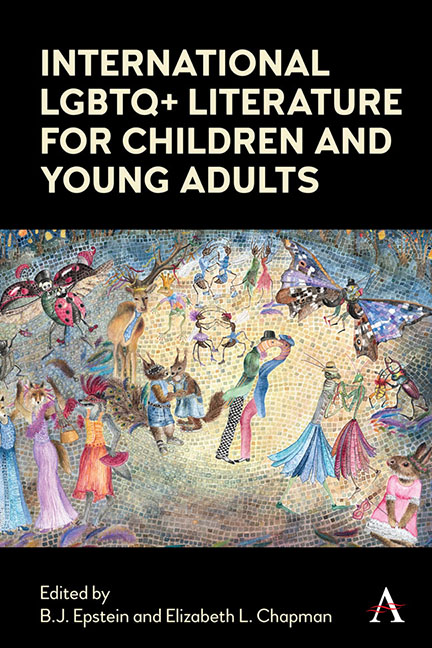Book contents
- Frontmatter
- Dedication
- Contents
- List of Illustrations
- Acknowledgements
- Notes on contributors
- Introduction
- BRAZIL
- FRANCE
- GERMANY/ AUSTRIA
- GREENLAND
- INDIA
- INDIGENOUS WRITING
- ITALY
- MULTINATIONAL
- MULTINATIONAL
- MULTINATIONAL
- THE PHILIPPINES
- SLOVENIA
- SOUTH KOREA
- SPAIN
- SWEDEN
- SWEDEN
- List of Primary Texts
- Index
Chapter Three - Stuck in the Binary: Heteronormativity and the Binary Conception of Gender in German-Language Trans YA
Published online by Cambridge University Press: 18 November 2021
- Frontmatter
- Dedication
- Contents
- List of Illustrations
- Acknowledgements
- Notes on contributors
- Introduction
- BRAZIL
- FRANCE
- GERMANY/ AUSTRIA
- GREENLAND
- INDIA
- INDIGENOUS WRITING
- ITALY
- MULTINATIONAL
- MULTINATIONAL
- MULTINATIONAL
- THE PHILIPPINES
- SLOVENIA
- SOUTH KOREA
- SPAIN
- SWEDEN
- SWEDEN
- List of Primary Texts
- Index
Summary
Introduction
With the publication of Julie Anne Peters's Luna in 2004, the existence of trans young adults was acknowledged in young adult (YA) literature in the English-speaking world. Despite reports saying that the number of YA books featuring trans characters is still rather low and that many titles are published by small presses that have little or no marketing, the presence of trans teenagers in English-language YA has been growing ever since (Bittner et al. 2016, 948; Sokoll 2013, 23). In German-language YA, the idea of the trans teenage protagonist does not seem to have caught on to the same extent. While several novels, such as Luna or Alex Gino's George (2015), have been translated into German, original German-language trans YA is rare. Noteworthy titles include Karen-Susan Fessel's YA novel Jenny mit O (Jenny with an O, 2005), a novel about a trans boy, assigned female at birth, who runs away from home; Lilly Axster's Atalanta Läufer_ in (Atalanta Runner, 2014) about a teenage runner who questions and transcends traditional gender classification; and Christine Fehér's Weil ich so bin (Because That's the Way I Am, 2016), a story about an intersex teenager struggling with their ambiguous gender expression.
The reason for the lack of attention to the topic of trans teenagers in Germanlanguage YA is difficult to pin down, but may be attributed to the fact that awareness of the existence and needs of trans people in Germany and Austria, where the aforementioned novels were published , has only been raised in recent years in these countries. It is still a challenge to find reliable figures regarding the number of trans people in Germany or Austria, but what can be evaluated is the current legal and policy situation. In its 2018 Rainbow Europe Map and Index, the NGO ILGA-Europe (the European Region of the International Lesbian, Gay, Bisexual, Trans and Intersex Association) lists Germany with a score of 59 per cent and Austria with a score of 56 per cent when assessing the LGBTI equality laws and policies of 49 European countries (100 per cent meaning full equality).
- Type
- Chapter
- Information
- Publisher: Anthem PressPrint publication year: 2021

